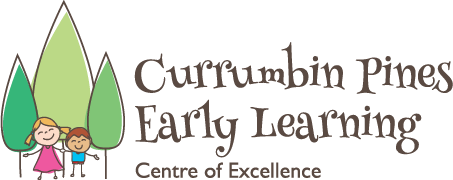It’s about time
Written By Sebastian Aldea
There is no doubt that we are experiencing one of the most notable changing periods in the history of humankind. Every year, technology improves, gadgets become smaller and smarter, processes appear to be easier and artificial intelligence seems to make our lives easier. The world is becoming so fast and efficiency and productivity are common words in our workplaces. All of this makes sense for the Adult’s World, but what about the children, who look at us from their own perspective?
In Australia, there are roughly 5.1 million children, who are witnessing how the world is getting faster every day. The rush of time is all-consuming, and yet, in the midst of this, we must ask ourselves: what does time really mean to children? To explore this, let’s look back at how the concept of time was understood in History.
Chronos & Kairos
The Ancient Greeks differentiated two types of Time: Chronos & Kairos.
Chronos is the forward-propelling time that we measure with clocks, or watches. Chronos is quantitative time, measured in years, months, weeks, days, hours, minutes, seconds.
On the other hand, “Kairos” is what many philosophers and mystics would refer to as “deep time”, an experience where our perception of Chronos stops or disappears, and we’re able to be truly present.
Let’s think about it: we wake up in the morning, and after a few seconds, our brain starts to think about the outward world: work, family, friends, due dates, etc. That is Chronos taking over our mind.
Now imagine a day where we would let Kairos take over for a moment: we wake up, but we don’t get up, connect to our breathing pattern, stretch our body, and slowly we start to tune into the day through our senses. This experience of Kairos is profoundly healing, as it allows us to connect with our real self, we listen to our body, and we observe with calm the thoughts that come to our mind.
But, wait a second, how is all of this related to the 3M, Mr. Sebastián?
Well, there is a place where Kairos is still ruling, and that place is the World of our Children. Children don’t stress about politics and economics; they are fully committed to their own development and deeply embracing and living the present moment. Children, through their play and exploration, engage in Kairos in a way that is holistic and instinctive. They live in the “here and now,” where time doesn’t pass in the usual measured way; instead, it is experienced as moments of joy, discovery, and learning, driven by their imagination and natural curiosity.
Children’s play is a direct connection to Kairos. When children play, they enter a world where time feels suspended. For example, a child building a sandcastle or pretending to be a superhero isn’t concerned with a timeline, deadlines, or even what happens next—they are simply living in the fullness of the present.
Through play, children experience pure moments of engagement and self- expression. These are moments when they discover themselves and their world, when their imaginations roam free and they connect with others. This state is the embodiment of Kairos: a timeless space where they can experience new things, learn without pressure, and find joy in their surroundings.
That’s why I believe that the 3M programme plays a crucial role in the nurture of our children’s development: because they are learning through play, lifelong skills that ultimately allow them to “be more present” and “slow their systems down”.
It provides the right environment for children to connect deeply with their own emotions, understand the world around them, and blossom into their authentic selves. By fostering a slower, more mindful approach to learning, it enables children to develop resilience, creativity, and a strong sense of identity—skills that will serve them throughout their lives.
Neurolearning (the crossroad between Pedagogy, Psychology & Neuroscience) and the Reggio Emilia approach highlight the vital role of the environment, not only as the “third teacher” but also as the epigenetic influence that shapes a child’s development. The environment in which a child grows plays a major role in nurturing their connection to Kairos. A world full of natural beauty, open-ended resources, and space to explore helps create a landscape for children to live in the present moment. When children are surrounded by nature, the unpredictability of the environment invites them to remain engaged in the present. A child wandering through a forest doesn’t worry about a to-do list—they explore because the trees, the animals, the changing seasons, and the texture of the earth are enough to fill their attention.
What can we learn?
In a sense, the world of children offers us a model for a more balanced, joyful approach to life. To preserve and nurture this way of living, it’s essential that children’s environments—be they home, (pre)school, or play areas—support their natural inclinations. Providing them with opportunities for open-ended play, encouraging moments of mindfulness, and allowing space for reflection can help them remain in touch with the present moment.
If we allow children to stay connected to their own rhythm of living, they will continue to thrive in the Kairos world they instinctively inhabit. That’s why I’m so committed with this programme, because the 3M approach offers a powerful framework for supporting children’s daily lives, enriching their ability to stay grounded in the present moment. The routine, with its focus on music, mindfulness, and movement, creates a nurturing space where children can experience life as it should be—slow, meaningful, and intentional. In doing so, it helps them build the foundation for a lifetime of healthy, mindful, and balanced living, preparing them to face the future with resilience and joy, while always staying connected to the present moment.
